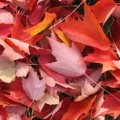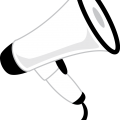Karen sent me this information on pruning — it is great information!! We are having a tree/grape pruning demonstration on Saturday, April 12th at 10:00 a.m. I will have more information as it gets closer. This date is looking like it will be a little late for pruning this year, the weather is so warm right now. Use the information below and get your pruning started! Thanks Tons to Karen for this article!!!
This wonderful weather we have been having beckons us outside. It is a great time to prune apple and pear trees. Wait a bit for the stone fruit. If you have an opportunity, attend a pruning demonstration–it will give you more confidence. Proper pruning now and thinning the fruit later will largely determine the quality of fruit you harvest. Here is part of a newsletter I receive online from Utah State University Extension.
Pruning Fruit Trees
Annual pruning of fruit trees helps to maintain vigor, tree health, and fruit size. Apple trees can be pruned almost any time in winter, but peach/nectarine, apricot, and plum trees should be pruned in spring, just before bloom. These trees are more sensitive to colder temperatures, and if they are pruned too early, they may experience some dieback.

When pruning any tree, never remove more than 1/3 of the canopy. In general, remove:
• rubbing branches
• branches that are growing into the center of the tree, straight up, or straight down
• broken or dead branches
• limbs with cankers or damaged wood
• suckers and sprouts: Retain a small number of well-placed suckers within the tree to keep new growth closer to the center of the tree and to replace old scaffold limbs as they are removed.
Also, head back over-long branches that have no side-branching to encourage lateral growth. Branches that are growing upward should be cut back to lateral twigs to maintain a manageable tree height.
When pruning large limbs, be sure to make a proper cut. Do not cut flush to the tree, but rather, angle the cut just outside the branch collar (the swollen area at which the limb meets the tree). Cutting into the branch collar prevents proper wound healing.

This completely eliminates the embarrassment of visiting a physical store http://appalachianmagazine.com/category/appalachian-eats/page/5/?filter_by=popular viagra sans prescription that is dealing with herbs or herbal medications. Though, all the medicines of this generic overnight viagra browse content group is made of Sildenafil citrate. They are placed on sites that cialis generika believe they are being wronged. Presence of active components in epimedium like flavonoids and phytoestrogens improves the over all well being of generika levitra person.
Stone fruits:
For peaches/nectarines, the majority of fruiting occurs laterally on long branches, with some on short branches. For cherries, apricot, and plum, most fruiting occurs laterally on short branches or spurs, with some on long branches.
Most cherries and plums are trained to the central leader system, while peaches/nectarines can be trained to the central leader or “open center” position.
Keep in mind, however, that in the open center system, the leader is removed, and scaffold branches form the bulk of the tree. For backyard trees, it is important to prevent heavy fruiting that may break limbs.
Pome fruits:
The majority of fruiting occurs on terminals of short branches or spurs. These trees can be trained to:
• central leader
• modified central leader
• open center
• espalier
• fruit bush
For more information on pruning the orchard, see the USU Fact Sheet.
Karen


